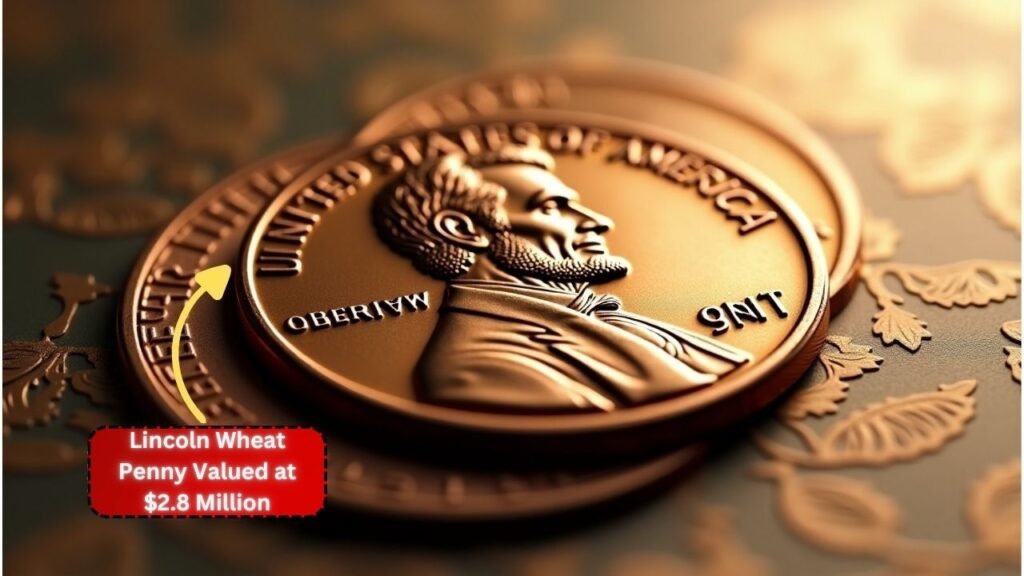In American history, one of the most famous coins is the Lincoln Wheat Penny. It is more than just a penny; there are some extremely rare and valuable copies that have sold for millions of dollars. This coin is genuine treasure in the coin-collecting air, with its rare design and the little speaking errors that gave it its value.
The Lincoln Wheat Penny
The Lincoln Wheat Penny was released in 1909 on the occasion of the centenary of Abraham Lincoln’s birth. It was the first U.S. coin that showed a real person rather than some allegorical figure like Liberty.
The penny’s reverse shows two wheat stalks indicating bounty while Lincoln’s profile adorns the front. Brenner’s initials, “VDB”, originally placed where the coin was minted, were shortly removed amidst some uproar, making the 1909-S V.D.B. penny rare.
Lincoln’s Wheat Penny Overview
| Department | United States Mint |
| Coin Name | Lincoln Wheat Penny |
| Release Year | 1909 |
| Designer | Victor David Brenner |
| Rarest Version | 1909-S VDB (with Brenner’s initials) |
| Beneficiaries | Coin collectors, investors, and history enthusiasts |
| Category | Rare Bicentennial |
| Official Website | https://www.usmint.gov/ |
The 1943 Bronze Penny
Zinc-plated steel was used in pennies by the US Mint in 1943 because of the great demand for copper due to World War II. However, quite a few coins are not from the batch of 1943 but are actually made from a few leftover bronze blanks from 1942. Today, they are among the rarest and probably the highest-valued coins in American history, with about 20 or so that are known to exist. One has been sold for $2.8 million.
How to Determine If a Lincoln Wheat Penny is Valuable
You can easily perform a few tests that will tell you if you have a valuable Lincoln Wheat Penny. The date is the 1943 penny for bronze; so first check the date. Most of your 1943 pennies are silver and made up of steel, but if the penny is copper, you may have something rare.

Another test for this is the magnet. If you magnetize a penny made of bronze or copper, it will not have any effect but if it was of steel, it will be attracted towards a magnet. The 1909-S VDB, the 1914-D, the 1922 plain (no mint mark), the 1931-S, and the 1955 doubled die penny are further significant Wheat Pennies.
Verify and Preserve Your Lincoln Wheat Penny
If you think that you have discovered a penny of great value, you must first have it authenticated by someone who has the experience. There are fake coins around, especially coins with dates that are highly sought after, such as 1943.

Expert grading agencies like PCGS (Professional Coin Grading Service) and NGC (Numismatic Guaranty Corporation) can verify the authenticity of your coin.
When it comes to giving great care and keeping safe a Lincoln Wheat Penny, the rules are: handle it only along the edges and store it in a vault.
FAQS:
Why are the 1943 bronze pennies valuable?
The 1943 bronze pennies are valuable for being mistakenly minted on leftover blanks of 1942 bronze.
What other Lincoln wheat pennies are valuable?
Also valuable are the 1914-D, 1922 plain (no mint mark), 1931-S, and the 1955 doubled die penny.
What makes 1909-S VDB Lincoln Wheat Penny rare?
From the time of Minting, it was widely believed that the initials of designer Victor David Brenner, V.D.B., would not be so clearly engraved on a penny. Eagerly after the penny was introduced to public displays, criticisms arose and the initials were quietly removed. This created an attraction for VDB penny collectors, hence the rarity of the minted pieces.

